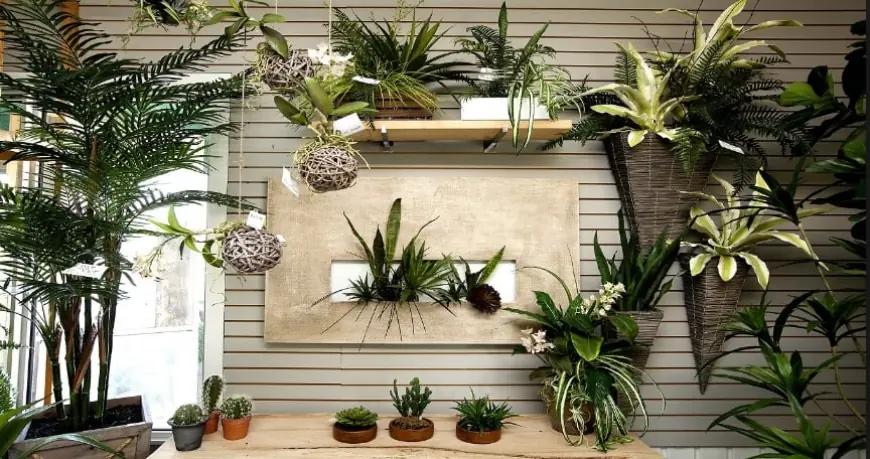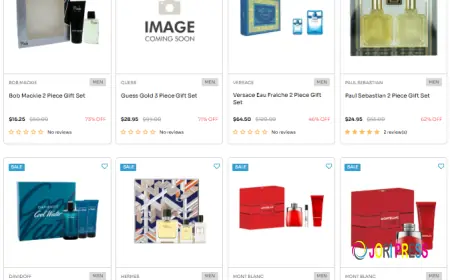Artificial Plants Market Accelerators Influencing Adoption Across Residential, Commercial, and Retail Industry Spaces
Explore the key accelerators fueling the artificial plants market, including lifestyle changes, sustainability trends, technological innovation, and commercial demand. Discover how these growth drivers are shaping opportunities for businesses and consumers worldwide.

The global artificial plants market is undergoing significant expansion, driven by multiple factors that accelerate adoption across residential, commercial, and retail sectors. Once considered merely decorative, artificial plants have now transformed into a lifestyle and design necessity, appealing to modern consumers seeking convenience, sustainability, and versatility. Several accelerators—including sustainability preferences, technological innovations, urban living challenges, and commercial design trends—are shaping the growth trajectory of this market worldwide.
1. Growing Demand for Low-Maintenance Greenery
One of the foremost accelerators of the artificial plants market is the rising demand for low-maintenance greenery. Urbanization, busy lifestyles, and limited availability of natural sunlight in high-rise buildings often make it difficult to nurture real plants. Artificial plants provide an easy solution, delivering aesthetic beauty without the challenges of watering, pruning, or pest management. This makes them highly appealing to working professionals, students, and individuals with limited time for gardening.
Moreover, the shift toward smaller living spaces has intensified this demand. Apartments, condominiums, and co-living spaces often lack outdoor areas, limiting opportunities for natural gardening. Artificial plants effectively replicate the appearance of natural greenery, helping occupants personalize their space with minimal upkeep.
2. Increasing Role of Sustainability and Eco-Friendly Design
Sustainability has emerged as a critical growth accelerator across industries, including interior décor. While the early perception of artificial plants was tied to plastic-heavy, non-biodegradable products, modern manufacturers are reimagining production with eco-friendly materials such as recycled plastics, biodegradable composites, and natural fibers. This shift appeals strongly to environmentally conscious consumers and businesses aiming to reduce ecological impact.
Additionally, artificial plants help conserve natural resources by eliminating the need for daily watering and reducing the energy footprint associated with plant care in large commercial buildings. Hospitality and corporate sectors increasingly use them as part of green-certified building designs to balance aesthetics with sustainability goals.
3. Technological Advancements Enhancing Realism
Another major accelerator is the rapid advancement in manufacturing technologies. Today’s artificial plants are crafted using high-quality polymers, silk, and innovative 3D printing techniques that replicate the intricate details of real leaves, stems, and flowers. Ultraviolet (UV) resistance treatments further enhance durability, allowing plants to retain their color and shape even in outdoor settings.
The improvement in texture, realism, and longevity has broadened their appeal across both households and high-end commercial spaces. Artificial vertical gardens, moss walls, and seasonal plant décor products are increasingly popular, with consumers finding it difficult to distinguish them from natural counterparts.
4. Expansion Across Commercial and Retail Spaces
Commercial demand is among the strongest accelerators of market growth. Retail outlets, corporate offices, restaurants, and hotels have embraced artificial plants as cost-effective, low-maintenance design solutions. Unlike real plants, artificial options do not require specialized staff for care, significantly reducing operational costs.
In hospitality and retail, artificial plants also allow year-round consistency in appearance, which is crucial for maintaining brand aesthetics. For instance, luxury hotels use artificial trees, hanging plants, and floral arrangements to create immersive spaces without concerns about seasonality or plant deterioration. This growing reliance on artificial greenery in B2B settings significantly fuels the market’s expansion.
5. Influence of Social Media and Lifestyle Trends
Social media platforms like Instagram and Pinterest have fueled lifestyle trends centered on home décor and indoor gardening. The visual appeal of artificial plants, combined with their accessibility, makes them a favorite among influencers and home design enthusiasts. Younger consumers, particularly millennials and Gen Z, are increasingly driving demand for affordable yet stylish artificial greenery to elevate their living spaces.
E-commerce platforms have further accelerated accessibility by offering a wide variety of artificial plants at different price points, making them available to consumers across urban and rural areas alike.
6. Seasonal and Event-Based Demand
Artificial plants are widely used in seasonal decorations, weddings, festivals, and corporate events. Their reusability and durability make them a cost-efficient alternative to natural flowers and plants. This factor is especially significant for event management companies that require consistent quality and long-lasting arrangements.
Additionally, the COVID-19 pandemic highlighted the importance of indoor aesthetics, leading to heightened demand for home décor solutions, including artificial greenery. While the pandemic phase has passed, the consumer preference for enhancing indoor environments has continued, sustaining demand momentum.
7. Globalization and Market Accessibility
Finally, globalization has played a crucial role in accelerating artificial plant adoption. Manufacturers in Asia-Pacific, especially China and India, are producing cost-efficient products, while North American and European brands focus on premium and eco-friendly segments. This dual-track growth ensures that products are accessible to both price-sensitive and luxury-driven markets, creating diverse opportunities for expansion.
Conclusion
The artificial plants market is experiencing robust growth, driven by accelerators such as urban lifestyle changes, sustainability initiatives, technological innovation, and expanding commercial applications. As manufacturers continue to enhance product realism and adopt eco-friendly practices, demand is expected to rise further across residential, retail, and hospitality sectors. With strong momentum from social media trends, event-based demand, and globalization, artificial plants have evolved into more than just decorative items—they represent a versatile, sustainable, and future-ready solution for modern interiors.
What's Your Reaction?
 Like
0
Like
0
 Dislike
0
Dislike
0
 Love
0
Love
0
 Funny
0
Funny
0
 Angry
0
Angry
0
 Sad
0
Sad
0
 Wow
0
Wow
0

















































